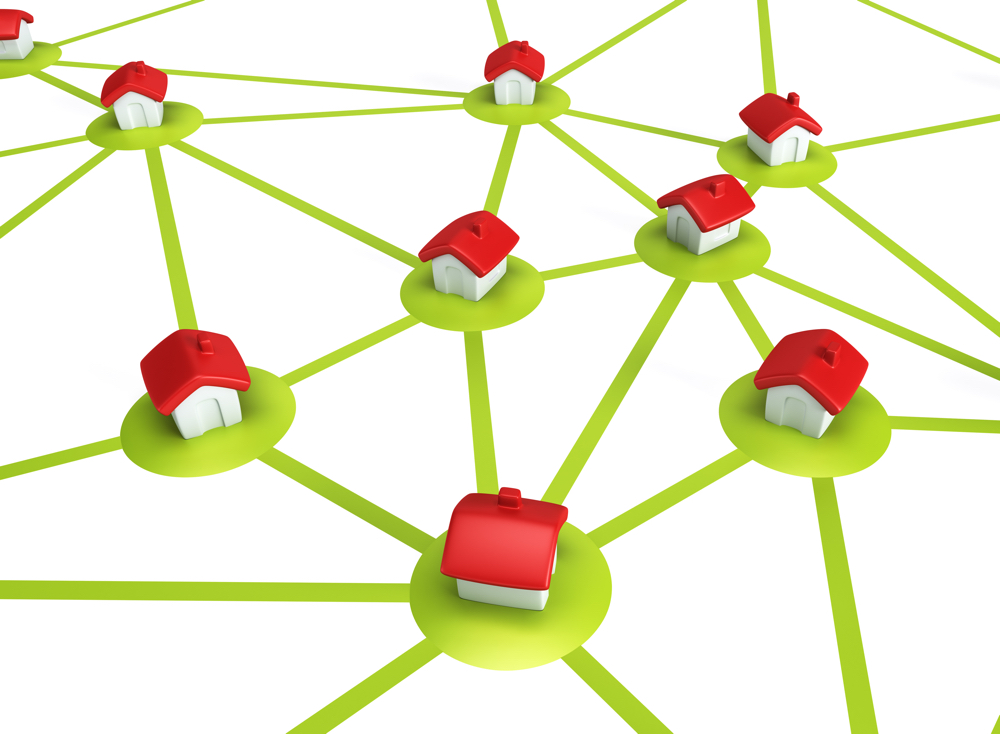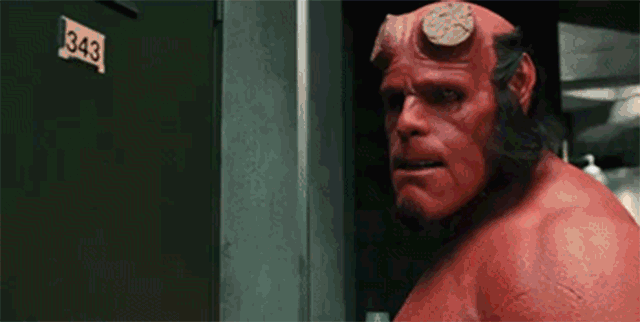
by Aussie Firebug | Dec 4, 2021 | Investing, Real Estate
Our third and last investment property (IP) has officially been sold 🎉👏
It was actually the second investment property that we bought and I’ve always referred to it at IP2 in this blog but we sold IP1 back in 2018 and IP3 a few months ago which is why it’s technically the third to hit the road.
Selling IP2 continues our strategy for creating a passive income to fund our lifestyle in retirement. The investment properties had a different purpose in our original strategy for reaching financial independence, but now we exited all our positions in direct real estate except for our PPoR which we bought in 2021.
What Was The Return?
Following the theme from the IP1 and IP3 sale articles, I’ll get straight to the point.
We turned $56,326into $119,094 over 8 years which works out to be an annualized after-tax return of 11.29%.
If you’re interested in all the finer details of how we arrived at that figure please read on.
The Numbers
IP2 was bought in SE Queensland for $169K in 2014.
Buying expenses
| $2,000 |
Initial deposit |
| $380 |
Building and Pest inspection |
| $25,700 |
More of the deposit |
| $6,487 |
Rest of Deposit |
| $6,625 |
Outlays including stamp duty and Legal Fees |
| $200.00 |
Settlement Fee |
| $488 |
Land Titles Office |
| $9,900 |
Buyer’s agent fee |
| $200 |
Guarantee Fee |
| $200 |
Fee for attending settlement |
- I paid a 20% deposit to avoid LMI
- I used a buyer’s agent because back in 2014 I was very time-poor. I didn’t have the time or desire to go up to Queensland to scope out the place and really do my due diligence so I outsourced it.
Actual money spent so far: $52,181
Cash Flow/Holding Costs
| Cash flow |
Year 1 |
Year 2 |
Year 3 |
Year 4 |
Year 5 |
Year 6 |
Year 7 |
Year 8 |
| Rent – Expenses |
-$1,121 |
-$2,116 |
$1,148 |
-$1,202 |
$1,672 |
$64 |
-$3,144 |
-$2,041 |
| Depreciation |
$5,940 |
$4,556 |
$3,496 |
$2,799 |
$2,339 |
$2,036 |
$1,835 |
$1,702 |
| Tax Refund |
$2,613 |
$2,469 |
$869 |
$1,480 |
$247 |
$730 |
$1,842 |
$1,385 |
| Total |
$1,492 |
$353 |
$2,017 |
$278 |
$1,919 |
$794 |
-$1,302 |
-$656 |
Total cash flow over the 8 years = $4,894
Notes:
- I had a lot of repairs that needed to be taken care of before I sold the property in years 7 and 8.
- I’ve included depreciation and a tax refund even though this property was held in a trust and not in my name. This means that the taxable income of the trust was lowered but my personal income was not affected. It’s hard to measure the full effect of the depreciation so I just used a refund amount based on the 37c tax bracket as I did for IP1 and IP3.
- I used the diminishing value method for depreciation.
Actual money spent so far: $47,287
Selling Costs
- $635 – Conveyancing
- $8,405 – Went through a traditional agent for the sale because the property was located in Queensland and I wasn’t in a position to go up there and host open days. The commission was a lot more than IP3 because apparently gold coast property has a premium attached 🙄
Total Selling Costs: $9,040
Total money committed to this investment over 8 years: $56,327
The IP was sold in November for $250,000
I invested $56,327 of my own money and received $119,094 ($250,000 – $135,800 + $4,894) 8 years later giving me an annualised return of 11.29%.
Return on Investment (ROI) and Tax
I used this website to calculate my return on investment for IP3. The formula was the following:
Annualized Return = ((Ending value of investment / Beginning value of investment) ^ (1 / Number years held)) – 1
And just like I explained in my IP1 Sold article, I’m only calculating how much of my money was spent, and how much cash I got back after I sold. Because that’s all that really matters IMO, it’s all about the cash on cash returns.
The tax bill for this investment will be washed through the trust and all of the gains will most likely go to my self-funded retiree parents or potentially my sister who has just had a baby and isn’t working. They will hopefully be kind enough to gift the profit back to the trust. So no tax be will be paid for this investment.
One last thing to note is that even though we had this property over 8 financial years, we technically only owned it for 7. So I used 7 in the calculations FYI
Why Did We Sell?
In a nutshell, selling our investment properties is part of our current investment strategy. We want to pump more $$$ into our index style share portfolio to create a passive income stream that will free us from the 9 to 5 grind.
Conclusion
Not much else to say really. I’ve been talking about going 100% passive for years and it feels awesome to finally be in this position.
The only thing left for us to do is deploy the $200K+ of cash we have sitting in the bank atm. We plan to debt recycling part of our PPoR loan with this money before we dump it into the markets but the details of that are in another article that I’ll hopefully publish before the end of the year (not long now).
Real Estate has been an incredible wealth-building tool for Mrs FB and I but there’s something super satisfying knowing the days of tenant issues are over… at least for now. We have no intention of jumping back into real estate in the future but ya just never know!
Spark that 🔥

by Aussie Firebug | Jul 2, 2021 | Investing, Real Estate
Our second investment property (IP) has officially been sold 🎉👏
I say second because we first sold IP1 back in 2018, but this IP was actually the third property we bought and I’ve always referred to it as IP3 on this site so it can be a bit confusing.
Selling IP3 continues our strategy for creating a passive income to fund our lifestyle in retirement. The investment properties had a different purpose in our original strategy for reaching financial independence, but now we are looking to exit all our positions in direct real estate except for our PPoR which we bought in 2021.
We still have one IP left (IP2) which hopefully will be sold at the end of 2021.
What Was The Return?
Following the theme from the IP1 sale article, I’ll get straight to the point.
We turned $65,313 into $126,298 over 6 years which works out to be an annualized after-tax return of 11.62%.
If you’re interested in all the finer details of how we arrived at that figure please read on.
The Numbers
IP3 was bought in SE Queensland for $250K in 2015.
Buying expenses
| $1,000.00 |
Initial deposit |
| $400.00 |
Building and Pest inspection |
| $11,500.00 |
More of the deposit |
| $37,900.25 |
Rest of Deposit |
| $2,078.83 |
Legal and conveyancing fees |
| $200.00 |
Settlement Fee |
| $728.40 |
Land Titles Office |
| $9,900.00 |
Buyer’s agent fee |
- Stamp duty was added to the loan for this IP instead of paying it upfront.
- I paid a 20% deposit to avoid LMI
- I used a buyer’s agent because back in 2015 I was very time poor. I didn’t have the time or desire to go up to Queensland to scope out the place and really do my due diligence so I out sourced it.
Actual money spent so far: $63,707
Cash Flow/Holding Costs
| Cash flow |
Year 1 |
Year 2 |
Year 3 |
Year 4 |
Year 5 |
Year 6 |
| Rent – Expenses |
$1,679 |
-$118 |
-$1,976 |
$711 |
-$1,285 |
-$1,989 |
| Depreciation |
$6,911 |
$4,117 |
$3,375 |
$2,872 |
$2,529 |
$2,293 |
| Tax Refund |
$1,935 |
$1,567 |
$1,979 |
$799 |
$1,411 |
$1,584 |
| Total |
$3,615 |
$1,448 |
$3 |
$1,510 |
$126 |
-$404 |
Total cash flow over the 6 years = $6,298
Notes:
- I had a lot of repairs that needed to be taken care of before I sold the property in year 6 which was the most expensive year. Year 3 and 5 also had some pretty hefty R&M jobs too.
- I’ve included depreciation and a tax refund even though this property was held in a trust and not in my name. This means that the taxable income of the trust was lowered but my personal income was not affected. It’s hard to measure the full effect of the depreciation so I just used a refund amount based on the 37c tax bracket as I did for IP1.
- I used the diminishing value method for depreciation.
Actual money spent so far: $57,409
Selling Costs
- $599 – Conveyancing
- $7,305 – Went through a traditional agent for the sale because the property was located in Queensland and I wasn’t in a position to go up there and host open days
Total Selling Costs: $7,904
Total money committed to this investment over 6 years: $65,313
The IP was sold in June for $320,000
I invested $65,313 of my own money and received $126,298 6 years later giving me an annualised return of 11.62%.
Return on Investment (ROI) and Tax
I used this website to calculate my return on investment for IP3. The formula was the following:
Annualized Return = ((Ending value of investment / Beginning value of investment) ^ (1 / Number years held)) – 1
And just like I explained in my IP1 Sold article, I’m only calculating how much of my money was spent, and how much cash I got back after I sold. Because that’s all that really matters IMO, it’s all about the cash on cash returns.
I know people like to crunch the numbers based on purchase and sold prices without factoring in leverage, but I just can’t see how this gives an accurate depiction of the investment when 99.99% of property investors use leverage when investing. It’s the only way real estate makes sense IMO.
The tax bill for this investment was washed through the trust and most of the gains actually went to my self-funded retiree parents. So just like IP1, we didn’t actually have to pay any tax for IP3.
I need to write another trust article that highlights our strategy when it comes to trust distributions because the trust is actually shaping up to be an enormous tax minimisation vehicle especially combined with debt recycling which will also be doing once our new home settles this month.
Why Did I Sell?
In a nutshell, selling our investment properties is part of our current investment strategy. We want to pump more $$$ into our index style share portfolio to create a passive income stream that will free us from the 9 to 5 grind.
Conclusion
IP3 wasn’t that much of a headache tbh. But it was still way more work than our share portfolio. I know hindsight is 20/20, but the share market would have actually made us more money in the same period of time with 0 work involved… 😑
But this is easy to say now in 2021 after a huge bull market. I’m still happy with the returns but it further illustrates to me that you really need to add value or solve a problem with real estate to make bank.
This may surprise some of you but I bought, managed and sold IP3 without ever actually seeing it in person 😅.
I paid someone a very high amount to do all the due diligence work for me so I was confident that the property was legit (I was still nervous until I received my first rent check lol). I also never improved the value of the property which is one of the biggest advantages I’ve always said property has over shares… the ability to physically add value. I seriously just bought it, dealt with a few tenant issues here and there and sold it 6 years later.
IP1 was very different because I put in the work (sweat equity) and physically improved the value of the home which was reflected in the sale price.
And now we only have IP2 left which we will be putting on the market later this year 🙂

by Aussie Firebug | Oct 31, 2018 | Investing, Real Estate
The first of our investment properties (IP) has officially been sold 🎉👏
This is part of our strategy for creating a passive income to fund our lifestyle in retirement. The investment properties had a different purpose in our original strategy for reaching financial independence, but they now will be sold off over the next few years when the time is right.
What Was The Return?
I’m so glad I can finally crunch all the numbers for you accurately now it’s been sold because you never quite know how much your true return will be until you actually sell your investment property.
Without a doubt the most interesting question on most peoples minds would be:
‘So how much did you make?’
To cut a long story short, we had an annualized after-tax return of 36.48%.
If you’re interested in all the finer details of how we arrived at that figure please read on.
The Numbers
This IP was built in south-east Melbourne for $340K in 2013. I lived in it originally to receive the FHOG.
Buying expenses
- $30,000 – Deposit ($9,000 from me plus $21,000 FHOG)
- I borrowed 91.33% of the property plus LMI. I would not recommend this but that’s what I had and the banks were allowing it back then. I wouldn’t have got that loan in today’s market.
- $4,634 – LMI even though my parents could have gone guarantor (no hands out for me)
I built this house so there were no expenses for conveyancing or stamp duty. All the loaned money went to the builder who was selling land and house packages.
I had a loan of $319,815 (the LMI got attached to the loan plus some other expenses).
Actual money spent so far: $9,000
Sweat Equity
- $3,840 – Landscaping. A new garden for the front, back and sides. Plants, pots, mulch, stones etc.
- $12,000 – Built a deck. Materials, building permit, labour help costs
- $1,400 – Concreating
- $4,410 – Other costs. Materials, Skip bins, money spent on food and other things while renovating etc.
I spent countless weekends with my old man and mum going up to the house to add value to it. This not only saved us money, but I also learnt a bunch of new skills. Win-win.
Total: $22,061
Actual money spent so far: $31,061
Cash Flow/Holding Costs
| Cash Flow |
Year 1 |
Year 2 |
Year 3 |
Year 4 |
Year 5 |
| Rent – All Expenses |
-$7,590 |
-$3,929 |
-$2,744 |
-$3,047 |
-$5,841 |
| Depreciation |
-$8,228 |
-$8,283 |
-$7,445 |
-$6,858 |
-$6,641 |
| Tax Refund |
$2,654 |
$4,519 |
$3,770 |
$3,664 |
$4,618 |
| Total |
-$4,935 |
$589 |
$1,025 |
$617 |
-$1,223 |
Total cash flow over the 5 years = -$3,927
Notes:
- The first year I had to live in the house for 6 months receive the FHOG. This meant that I couldn’t claim all of the expenses for that year. Only for the 6 months I had it as an investment
- I ended the lease with the tenants and cleaned the house up a bit which is why year 5 is so expensive. I had to cover interest repayments for a few months before the house was sold.
- Depreciation is not including in the cash flow because it’s not an actual loss of cash flow whereas the tax refund is money coming into my account
- I used the diminishing value method for depreciation. Don’t ask me why it somehow depreciates more in year 2 than year 1 🤷, that was what was on the report.
- Tax refunds are based on the 37c tax bracket
Actual money spent so far: $34,986
Selling Costs
- $700 – Conveyancing (had a friend do it cheap)
- $2,210 – Used an online agent to sell the property. No way I’m paying 2.5% plus marketing just to list it on RealEstate.com and host a few open days
- $3,850 – Staging. Maybe unnecessary but I like to think it worked
Total Selling Costs: $6,760
Total money committed to this investment over 5 years: $41,746
The IP was sold last month for $512,500
I invested $41,746 of my own money and received $197,697 in return over a 5 year period.
ROI vs ROI On Money Invested
Way too often when anti-property commentators are trying to convince investors that another market has had superior returns over the last X amount of years they usually leave out the most important part of the equation.
Property investors use leverage to buy their investments.
Without factoring in leverage, I don’t understand how anyone can make blanket statements about the true returns of real estate. It’s not comparing apples with apples.
With that said, I want to provide you with both returns numbers so I can further illustrate the point that the only real return number you should be measuring is how much money you put in and how much you get out.
ROI
Capital Gain = (gain from investment – cost of investment) / cost of investment
= ($512,500 – $386,821) / $386,821 = 32.49%
Annualized Capital Gain = 5.79%
Gross Yield = Annual Rent / Purchase Price * 100
= $18,720 / $340,000 *100
Gross Rental Yield = 5.51%
Net Yield = (Annual Rent – Annual Costs)/ Purchase Price * 100
= $15,985 / $340,000 *100
Net Rental Yield = 4.70%
Total Annualized Return
8.28% + 4.70% = 12.98%
Notes:
- I’m not 100% sure I can simply plus the two return figures together since one is annualized and the other is just an average rent of $360 per week (maths wizards please correct me). But the overall point still stands that the investment doesn’t look great without leverage.
- The above calculations are assuming that we buy the property outright. This would mean no interest repayments or LMI costs.
- 12.98% may sound like a decent return, but what’s not factored in is the 100s of hours of labour and travel spent on this property to achieve this result. Considering you could have got better returns from shares over the same time period with no work required, you’d be mad to buy an investment property outright.
- I have not factored in the replacement costs as the house depreciates. This hidden bill will rear its head eventually. Something shares don’t suffer from.
ROI On Money Invested
This one is a lot easier to work out and the true measure of the investment, not an assumption.
ROI = (gain from investment – cost of investment) / cost of investment
= ($197,697 – $41,746) / $41,746 = 373.57%
Annualized Total Return = 36.48%
Tax?
In an extremely fortunate turn of events, IP1 became my PPOR after I first moved in to receive the FHOG.
Even though I rented it out, I never bought another house to live in which was not specifically planned but worked out incredibly well. There’s a special rule where you can treat your dwelling as your main residence after you move out for up to six years even if it’s used to produce an income.
Believe it or not, this means that I don’t have to pay a single cent of tax due to the CGT exemption for main residence rule 😱🤑.
My Experience With IP1
Investment property 1 taught me more life lessons than any investment in the future ever will.
It was the first house I ever bought, renovated, sacrificed countless weekend adding value to it with my old man helping me out and a whole raft of issues that I had to figure out along the way. From dealing with tenants, discovering how many hoops you have to jump through with banks, lodging insurance claims, rushing to finish the concreting in 38-degree heat (would not recommend), hosting open days and so much more.
Some say property investing can be passive. IP1 was definitely not passive!
It was hard work which did eventually pay off in the long run. Now, how much of its success can I take credit for? That’s a very good question.
Looking back in hindsight I can point out a few key things that happened that I had nothing to do with and was 100% luck
- FHOG being available boosted my deposit meaning I only had to put down $9K (crazy)
- The banks lending criteria was completely different back then. No way I get a loan in today’s market only having $9K to put down
- For the majority of my loan, interest rates were being cut. Every couple of months I had to pay less and less in interest which at the time seemed cool but it’s only with hindsight I can truly understand how fortunate of a time it was to be in real estate. It has only been the last 18 months I have seen my I/O loans rise in rates
- Melbourne experienced a property boom basically the whole time I had the property. It was only the last 3 months that the prices started to drop and the loans market really tightened their belt. The property was actually under contract before I sold, but it fell through because the buyer couldn’t get finance. I experience this two more time (not officially under contract though) before I had a buyer who was cashed up. Based on what similar properties were selling for, I estimated that IP1 dropped by around $30K since the start of 2018.
I fully admit that all of the above was unforeseen, I was just hoping for the property to keep up with inflation and use leverage to amplify the gains.
One of my favourite quotes of all time comes from the Roman philosopher Seneca.

I’m a big believer that you can create your own luck. Whilst I still think that the majority of the return from IP1 came from an uncontrollable event (market boomed), there were things that definitely helped bolster the profits that were in my control.
- I actually identified the FHOG as an opportunity not to be missed. I signed my contract on the 29th of June which was one day before they scraped the FHOG all together back in 2012. This opportunity was available to all my friends, but most of them did not take it
- I realised that it was unlikely for me to make a lot of money if I paid for everyone else to do the work for me. I looked to physically add value where I could and since I was full of enthusiasm and energy back then. Countless weekends were spent working on the house. Sacrifices were happily made if that meant I could reach my goal of FIRE quicker
- I sought advice from experienced property investors who knew what to look for when investing…my parents of course! I understand this luxury isn’t available to every but it’s worth seeking one out if you can. There were small things that helped the investment like buying near public transport, schools, amenities, easy access to the M1, in an area with strong employment options and projects scheduled for the future etc.
- Getting out of my comfort zone to learn new things such as selling IP1 online saving over $15K in commission fees. The experience I gained from negotiating the deals was invaluable. Some might argue that a skilled and experienced agent could have secured a better sale price. That may be true but we’ll never know. What I do know is that I saved over $15K doing it myself and I’m choosing to save $15K over potentially getting a higher profit every day of the week!
Why Did I Sell?
The strategy moving forward is to sell all the investment properties and transition to a more cash flow portfolio of ETFs/LICs. IP1 was the first cab off the rank for the following reasons
- The market had gone bananas and I was very keen to lock in that profit and not risk something happening, which sorta happened with the market pullback in the last few months. But I’m very happy with the return we got so no complaints here 🙂
- I would have reached 6 years next year which would have affected the main residence status for tax purposes. This means that I would have had to pay taxes on part of the sale
- There was some upkeep work that I was fed up with. IP2 and IP3 are part of a body corp which takes care of a lot of the maintenance.
- Whilst IP1 had gone up considerably in value, the cash flow was still shithouse! Technically positive cash flow after the tax refund during the last few years (apart from the selling year due to the extra costs). It still was nowhere near as good as what shares could offer for half the investment.
Conclusion
Overall IP1 has been a very successful investment in terms of both return and life skills obtained. I was very fortunate to be in the market during the time I was and I’m pretty confident in saying that I’m most likely never going to make as much money in any other investment ever again.
This may sound like a bummer but the truth is that IP1 was a hell of a lot of work! I can’t be effed doing all that again and I doubt I will have as lucky timings with the market twice. It’s a risk I don’t have to take and Strategy 3 suits our current lifestyle better being so passive.
What’s really hard to measure and has not been factored into the above return is all the physical work required. It was essentially a side hustle I did on weekends (not every weekend but a lot). If I deducted the hours worked * an hourly rate, the return would be less.
I’m still a fan of property investing for the right investor, but I am no longer the right investor and will continue with our strategy of selling off the other two IPs when the times right. It’s my opinion that there are more problems to solve with real estate and more opportunities for those who seek the challenge vs shares.
How has your experience been with real estate? I would love to hear from others positive or negative in the comment section below 👇

by Aussie Firebug | Sep 30, 2016 | Real Estate
If/when you get to a point in your life where you own multiple properties, you will no doubt come across the term ‘cross collateralisation’. It’s a very important loan structure issue that you must fully understand if you ever do decide that it’s the best option for you. Many mortgage brokers (my first included) don’t actually understand the full implications themselves and are more than happy to sign you up for it because it’s usually an easier process. Cross collateralisation can very rarely be a good option, the majority of the time it simply increases the investors risk and strengthens the banks position of power.
Cross Collateralisation Explained
Cross collateralisation is when you use house A as security for purchasing house B.
Lets look at how you buy a house in the first place. THE most important thing when buying is….THE DEPOSIT! Banks love that shit. If the deposit is big enough you can pretty much guarantee that the bank will approve your loan.
No Job? No Education? No prospects?
Got a huge deposit, no worries. (I’m talking like >70% here guys)
It’s important to understand what the actual deposit means to the banks. It’s their way of lowering their exposure to risk.
Think about this. If you buy a $400K house with a 20% deposit that means the banks lent you $320K. Worst case scenario for the banks is you default on your loan and they are forced to sell to recoup their investment (the loan). They are not worried in the slightest about making money from this property, they just want their money back asap.
Ever wonder why you always hear of these stories of foreclosure bargains? It’s because the banks could not give two shits about an extra $10K, $20K or $40K. That’s pocket change to them. They just want to get back what’s theirs.
So now they have this house which the owner paid $400K for. Unless there has been a big downward swing in the market you would surely think that the banks could at the very least sell it for somewhere near the $320K mark. If they do then relatively no harm done, they loaned out $320K and got back their investment. No money made but minimal lost…except if you’re the poor sod that applied for the loan. You’re probably down the shitter now but like the banks care right?

So as you can see, the deposit is king to the banks and without a decent sized one (at least 20%) you are likely to pay exuberant fees to get the loan approved.
So why have I explained the above? Well as I have already mention, deposit is king. But what if I told you there was a way to get a loan approved without having to fork out one dollar? With the flick of a pen you can have access to hundreds of thousands of dollars.
Sounds too good to be true.
Enter Cross Collateralisation.
No Such Thing As A Free Lunch
Cross Collateralisation uses equity as the ‘down payment’ instead of cold hard cash. To simplify things, lets assume we have $200K of untapped equity on our family home (House A). We want to buy House B for $400K but don’t have a deposit.
To secure the loan we can use the equity from House A as collateral. This essentially does the same job of lowering the banks risks, just utilizing a different method.
House A Loan: $300K
House A Value: $500K
House B Loan: $420K (loan includes 5% buying costs)
House B Value: $400K
Security: $500K + $400K (the value of both properties)
LVR : $300K + $400K = $700K
. $500K + $400K = $900K
= 77% LVR (loan value ratio)
There will be a section in the loan contract that details that this loan is secure using another property over which the lender holds it’s mortgage.
‘Wow that’s pretty cool isn’t it? Didn’t even have to save any money to buy another property and the banks made the loan contract a breeze. I’m going to buy all my properties from now on using this method’

You must consider the ramifications first.
1. Selling Headaches
Every wonder what happens when you want to sell the property that you used to secured the others?
To put it simply…Whatever the bank decides is going to happen.
They have complete control over the proceeds of the sale. I hope you didn’t have anything planned for the money you were going to get when you sell House A. Because the bank has just decided that House B is at a higher risk than when you first bought it and now requires your loan to be at 70% LVR. So that $200K you just received is going straight to the loan on House B…Nothing you can do about it.
And if you think that’s bad. Imagine a situation where you have secured multiple houses with multiple other houses…shit show.
2. Equity Withdrawals
At the moment, if I want to withdraw equity from one of my properties it’s super simple. I apply for the withdrawal and as long as I’m keeping it under 80% LVR there are minimal hoops I have to jump through. I’ve done this three times now (once for each of my IPs) and it’s been very straight forward.
There has been times though where one of my properties have gone up in value and the others have gone down. Because my properties are not cross collateralised I am able to access the equity from the IP that went up because they are seen by the banks as separate .
If you have all your properties cross collateralised however the bank views all of them as the same. You might have had one IP go up by $50K but the others go down by $30K each. This would mean you can’t access the equity on the one that went up which may impact your opportunities moving forward.
3. Want To Swap Lenders?
‘Hey look at that! CBA has been ripping me off with their high interest rate. I’m going to move all my loans to the lower rate at Ubank’
People do this all the time. The problem with Cross Collateralisation is that you can’t just move one or two loans across. You have to either move everything or nothing. Depending on who you’re going to they may not want that level of risk exposure. They might charge extra fees for having to value all the properties to determine the position.
In short it’s a pain in the ass for a process that is so much easier for stand alone loans.
4. Complicates Things
The extra paper work you have to complete only increases the more you cross collateralise.
Want to sell? Complete evaluation of your entire portfolio (assuming you have cross collateralised your entire portfolio).
Want to withdraw equity? Complete review of your financial position on all properties.
Want to move banks?…. You get the picture.
What To Do?
If you discover cross collateralisation exists in your portfolio without you even knowing it (happens all the time) there are a few things to consider.
Cross collateralisation isn’t a problem… until is it.
What I mean by that is that it’s perfectly fine to cross collateralise if nothing goes wrong. But the odds of something undesirable happening increase when you cross collateralise and it usually only benefits the bank.
If you want to uncross your loans go see a mortgage broker who can assist you and work out a plan of attack.
Stand Alone Loans
You really want all your loans stand alone. The only advantage I really see for cross collateralisation is the convenience of setting them up. The banks really like to strengthen their position so they make it super easy to cross collateralise.
The thing is, if you have equity. You can withdraw the equity as cash and use that cash as a down payment for a new loan. I have utilized this method in the past and have had great success with it.
You have to check with your lender on the conditions for equity withdrawal but if you can do it, it’s a much smarter way to buy your next investment as opposed to using cross collateralisation.
Wrapping Up
Cross collateralisation may be convenient and appealing for investors looking to buy a new property without using their own money. However, cross collateralisation rarely is a good thing and the majority of the time it does nothing but cause headaches later down the track. The banks prefer cross collateralisation because it strengthens their position of power and they have all the control.
If you have equity available, look to withdraw this equity as cash to use as the down payment for the new loan. You might have some short term pain with a bit more paperwork and a few more hoops to jump through but your future self will thank you for laying the foundations of a strong portfolio now rather than later.

by Aussie Firebug | Dec 24, 2015 | Mindset, Real Estate
Lets talks about Melbourne and Sydney Real Estate for a second because it pops up in my life at least once a week.
I have a lot of friends renting in Melbourne who are at the age now that they are starting to look at buying a house.
They look around and quickly discover that the prices are outrageous. The median price for a house is Melbourne is well over $700K! Using the common 25% rule for a deposit and closing costs, this would mean that my mates would have to fork out $175K to buy one of those bad boys… That’s a LOT of money to depart with.
As you can imagine, there are plenty of people who can’t afford these prices and they are crying out for something to change. But can something really be done here?
I don’t think anyone can honestly say that prices in Melbourne and Sydney are affordable to the middle class. You either have to be a high income earner or wealthy to buy in these cities.
Sure, the average working class family could take out a huge mortgage but they would be a slave to debt for the rest of their life most likely.
So what’s the deal?
I have been reading COUNTLESS articles and reports for years on why there is a housing bubble and how it’s going to create the mother of all corrections in 2004, 2005, 2006, 2007, 2008, 2009, 2010, 2011, 2012, 2013 ,2014, 2015, 2016.
There are a lot of theories being thrown around:
- Negative Gearing
- Capital Gains Concessions
- Foreign Buyers
- Speculative Investors
I’m not going to pretend that I know exactly why the prices are the price they are or how to bring them down to a more affordable level. But it doesn’t take much to understand the most basic and fundamental rule in economics.
Supply and Demand
It’s so stupidly simple to understand yet so many go looking for more complex answers to justify their reasoning as to why this is happening.
If there are a lot of buyers (demand) and there is only so much land/property available (supply) the price for the land/property soars. And the same can be said if you switch it around. What do you think would happen this very weekend at auctions if no one turned up? The prices would plummet. No doubt about it. If there are less buyers than sellers the price of real estate goes down. This is proven economics 101.
So the question people need to be asking is not how the government can stop the buyers (demand), it should be about how they can free up the land (supply).

Carve it in stone, demand for Melbourne and Sydney real estate will NEVER cease for as long as I live. It would have to take such a colossal implosion of Australia for these two cities to suck. Not completely out of the question, but I will eat my shoe if there is EVER a time where you can’t sell real estate in either Melbourne or Sydney.
They are world class cities. Melbourne was ranked the NUMBER 1 most livable city in the entire world last year and if memory serves me correctly it has been number 1 or 2 for a few years running. Sydney is no slouch either coming in at number 7. I just want to highlight this point because it’s important. If you’re trying to buy a house in Melbourne you are trying to buy real estate in THE MOST LIVABLE CITY IN THE WORLD! The world… not just little old Oz. The entire planet.
What do you think this does to Melbourne and Sydney real estate when they are some of the best places to live in on the planet?
Demand goes through the roof.
You have got to be realistic here. You are trying to compete with not only Australians but the rest of the world when you buy. Throw in limited supply and you have a recipe for exuberant house prices.
I don’t see any measure the government can put in place to stop demand enough for the prices to go back to an affordable level.
The focus is always on the demand, but little gets said about the supply.
Is it unreasonable to assume that if municipalities changed zoning and planning laws and released more land to pave the way for new development that this could potentially deflate some of the house prices? To me it makes sense. If you increase the supply in the market, the current supply will be worth slightly less.
The truth is I don’t really know (no one does), but I’m a realistic person. And when I look at Sydney and Melbourne I don’t see the demand slowing, in fact, with population forecasted to more than double by 2060, if anything, I see demand rising.
If the supply cannot keep up with the demand then it’s only going to get worse.
There may be a correction around the corner, I think there should be. But I doubt that Melbourne/Sydney real estate will ever be cheap, EVER!
Photo credit: szeke via Foter.com / CC BY-NC-SA
Photo credit: CAr Photographies via Foter.com / CC BY-NC-SA











